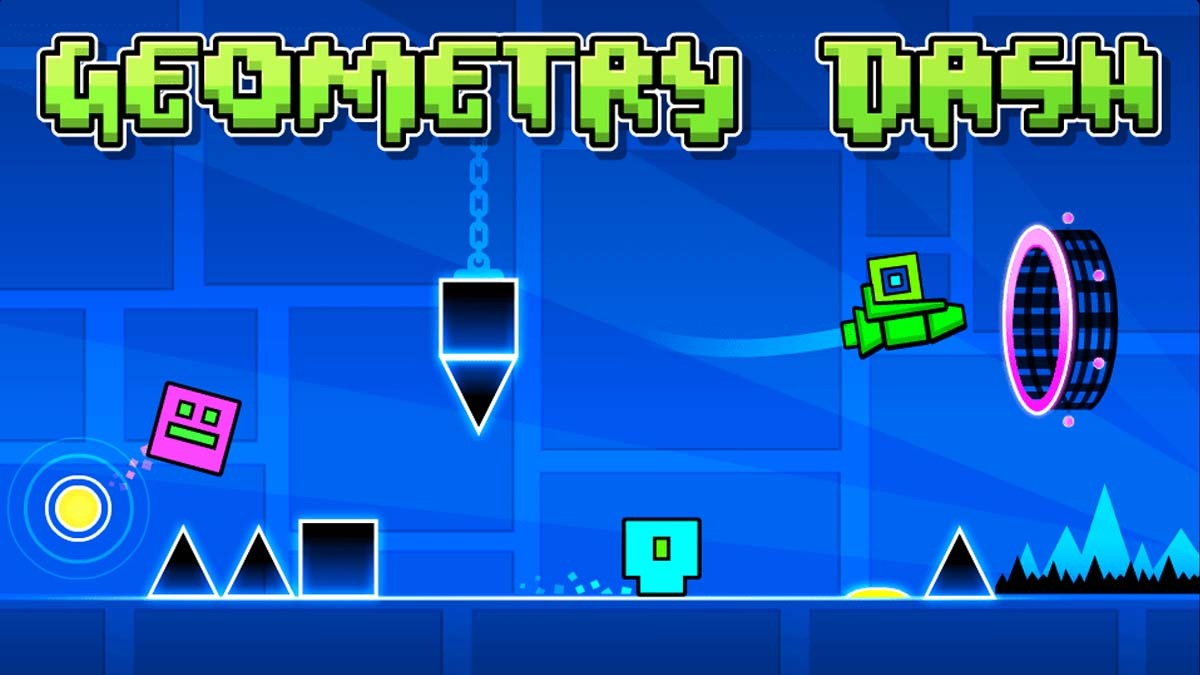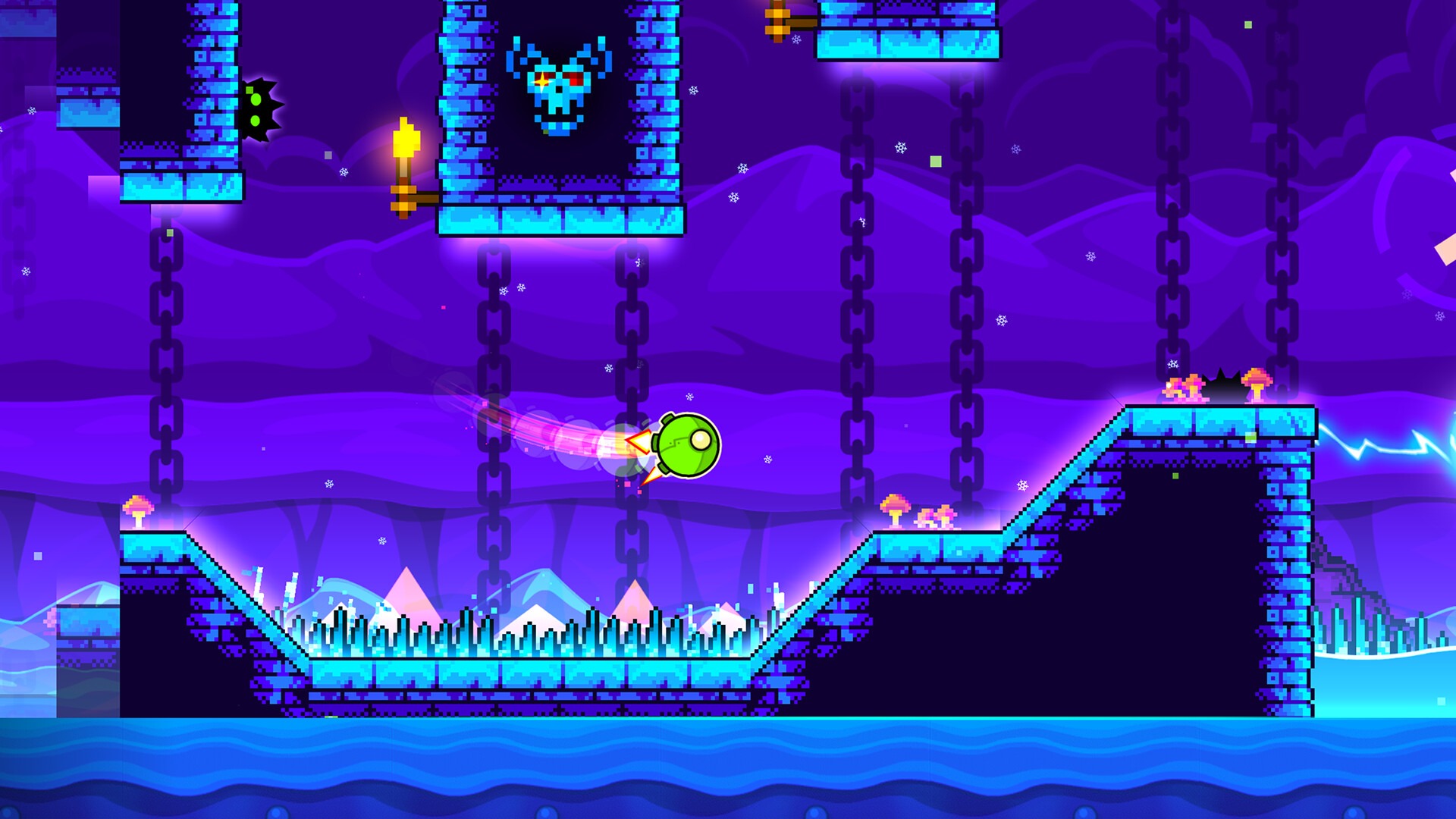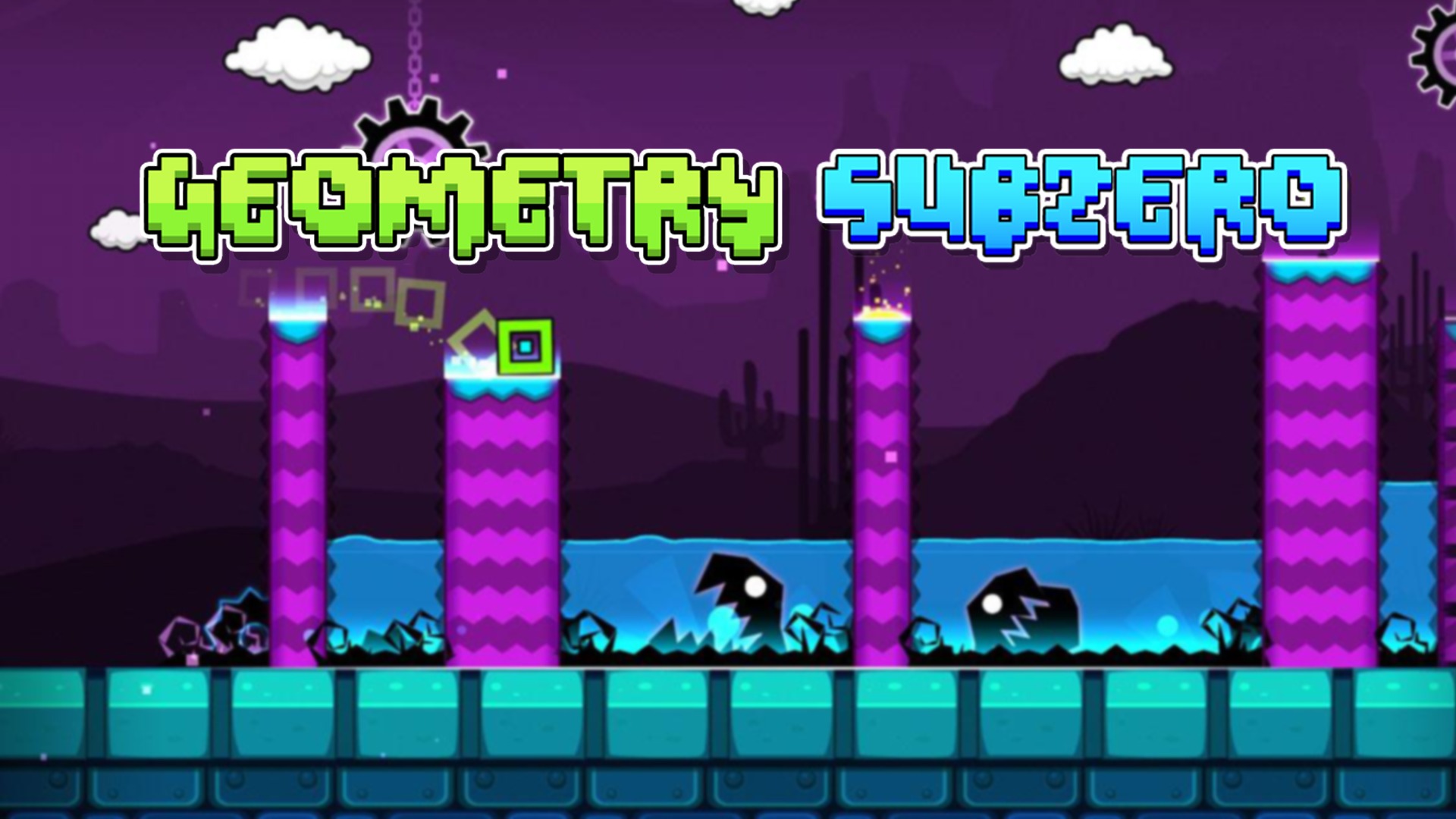
Geometry Dash
All trademarks belong to their respective owners. Get GamePrepare to embark on an exhilarating, heart-pounding journey into the vibrant, neon-soaked world of Geometry Dash, a rhythm-based platformer that has redefined precision gaming and captivated a global audience. Developed by Swedish indie mastermind Robert Topala, known as RobTop, Geometry Dash isn’t just a game; it’s a testament to the power of simple mechanics combined with relentless challenge and an unparalleled user-generated content (UGC) ecosystem. Launched in 2013, what began as “Geometry Jump” quickly evolved into a cult classic, spawning multiple spin-off titles and fostering one of the most creative and dedicated communities in all of gaming.

At its core, Geometry Dash challenges players to navigate a square-shaped icon through a horizontally scrolling gauntlet of treacherous obstacles, all meticulously synchronized to an energetic electronic soundtrack. With a deceptively simple one-touch control system – tap to jump, hold to fly – the game demands pixel-perfect timing, lightning-fast reflexes, and a keen sense of rhythm. One wrong move, one mistimed jump, and it’s back to the beginning. This brutal difficulty, far from deterring players, is precisely what makes Geometry Dash so addictive, transforming frustration into an irresistible urge for “just one more try.”

But the magic of Geometry Dash extends far beyond its official levels. RobTop’s genius lies in providing players with a comprehensive, powerful, and accessible level editor. This groundbreaking feature has unleashed a torrent of creativity, allowing millions of players to design, build, upload, and share their own custom levels. From mind-bending puzzles to impossible “Demon” levels, the community-created content has become the lifeblood of the game, ensuring endless replayability and a constantly evolving landscape of challenges. Whether you’re a seasoned player seeking the next impossible feat or a creative mind eager to build your own rhythm-fueled nightmares, Geometry Dash offers a truly unique and infinitely rewarding gaming experience. Get ready to jump, fly, flip, and dash your way to glory!
The Art of Precision: Unpacking Geometry Dash’s Core Gameplay
Geometry Dash’s captivating gameplay hinges on a refined set of mechanics that are easy to learn but incredibly difficult to master. The constant auto-scrolling nature of the levels, combined with the rhythmic obstacles, creates a unique dance between player and environment.
1. One-Touch Wonder: Simple Controls, Profound Depth:
The fundamental control scheme is elegant in its simplicity:
- Tap/Click/Press: The single input dictates your character’s action. For the standard “Cube” mode, a tap makes your icon jump. Holding down the input can make certain vehicles (like the Ship or UFO) ascend or a Robot perform a higher jump.
- Release: Releasing the input brings your character back down (for vehicles) or ends a held action.
This minimalist control system belies the immense precision and timing required to succeed. Every obstacle, every jump pad, every portal demands an exact input, often in quick succession, creating a fluid yet intensely demanding flow.
2. Game Modes and Transformations: Adding Layers of Complexity:
As you progress through Geometry Dash levels, your icon isn’t static. Portals will transform your character into various forms, each with unique movement mechanics:
- Cube: The default mode. Taps make you jump.
- Ship: Holding the input makes you fly upwards, releasing makes you descend. Navigating tight spaces and avoiding spikes in this mode is a signature challenge.
- Ball: Tapping or clicking flips your gravity. This requires quick, precise alternating taps to navigate upside-down sections.
- UFO: Each tap makes you perform a small jump, reminiscent of Flappy Bird. Mastering the rhythm of rapid taps is crucial here.
- Wave: Holding the input makes you ascend diagonally, releasing makes you descend diagonally. This “zigzag” movement is notoriously difficult for navigating narrow, winding passages.
- Robot: Tapping makes you jump, but holding the input makes you perform a much higher jump. This offers more vertical control than the standard cube.
- Spider: Tapping immediately teleports you to the nearest floor or ceiling. This is all about quick, directional taps to avoid spikes and walls.
Furthermore, portals can introduce modifiers to these game modes:
- Size Portals: Shrink or enlarge your icon, affecting hitbox size and jump height.
- Gravity Portals: Instantly flip your gravity, requiring mental agility to adjust to inverted controls.
- Mirror Portals: Reverse the screen horizontally, demanding a complete re-orientation of your reflexes.
- Dual Portals: Split your icon into two, requiring you to control both simultaneously with a single input. This is a significant test of multitasking and visual processing.
- Speed Portals: Alter the scroll speed of the level, from incredibly slow to blindingly fast, dramatically changing the timing required.
- Teleportation Portals: Instantly move your character from one point to another, often used for surprise elements or complex platforming sequences.
3. Obstacles and Hazards: The Gauntlet of Death:
The levels are populated with a diverse array of obstacles designed to test your reflexes to their limit:
- Spikes: The most common and unforgiving hazard. Touch a spike, and it’s instant death.
- Sawblades/Gears: Rotating or static blades that require precise jumps or maneuvers to avoid.
- Walls/Blocks: Solid structures that must be jumped over or navigated around.
- Moving Objects: Platforms or hazards that shift, requiring timed movements.
- Orbs: Colored orbs (yellow, pink, blue, green, red) that, when tapped, provide a jump or gravity flip. Learning their specific effects and timing their activation is key.
- Jump Pads/Rings: Colored pads (yellow, pink, red) and rings (yellow, blue, green) that automatically trigger a jump or gravity flip when touched.
4. Practice Mode: Your Training Ground:
Recognizing the game’s brutal difficulty, RobTop included an invaluable “Practice Mode.” In this mode, players can place checkpoints anywhere in the level. Dying at a checkpoint simply respawns you there, allowing you to repeatedly practice difficult sections without restarting the entire level. While progress in Practice Mode doesn’t count towards official completion, it’s an essential tool for memorizing complex sequences, perfecting timing, and ultimately conquering the most challenging levels.
5. The Rhythm Connection: Music as Your Guide:
One of Geometry Dash’s most defining features is its deep integration of music. Each official level features a unique electronic soundtrack, and the obstacles and gameplay elements are meticulously synchronized to the beat. This means that often, success comes not just from visual cues, but from internalizing the rhythm and letting the music guide your movements. This fusion of rhythm game and platformer creates an incredibly immersive and satisfying experience when perfectly executed.

Fueling the Fire: Geometry Dash’s Unique Monetization and Community Economy
Unlike many modern mobile games that rely heavily on aggressive microtransactions, Geometry Dash employs a refreshingly player-friendly monetization strategy that focuses on value and community empowerment.
1. Premium Purchase: The Upfront Investment:
The primary monetization model for the full version of Geometry Dash is a one-time premium purchase. Players buy the game upfront, gaining access to all official levels, the comprehensive level editor, and the vast library of user-generated content without further paywalls for core gameplay. This stands in stark contrast to the freemium models prevalent in most mobile gaming, and it’s a significant reason for its enduring popularity among players who appreciate a complete, ad-free experience.
2. Free-to-Play Spin-offs (Lite, World, Meltdown, SubZero):
To attract new players and offer a taste of the game, RobTop has released several free, standalone versions:
- Geometry Dash Lite: A free version featuring a limited selection of official levels, serving as an extended demo for the full game.
- Geometry Dash World, Meltdown, and SubZero: These are smaller, free spin-off games that include exclusive official levels and a scaled-down version of the level editor and online features. They often feature rewarded video ads, which provide a revenue stream while offering players free in-game currency or items for watching. These acts as excellent marketing tools, enticing players to purchase the full game for the complete experience.
3. In-Game Currency and Customization: Earned, Not Bought (Mostly):
The game features several in-game currencies that are primarily earned through gameplay, not direct purchase:
- Stars: Awarded for completing official and rated user-created levels. Stars act as a measure of a player’s progress and skill, unlocking new icons and achievements.
- Secret Coins: Hidden within official levels, collecting these unlocks exclusive icons and achievements.
- User Coins: Similar to secret coins but placed by creators in user-made levels. These also contribute to unlocks.
- Mana Orbs: Earned by completing rated levels, daily levels, quests, and chests. Mana Orbs can be spent in various in-game shops to purchase icons, colors, and other cosmetic customization options.
- Diamonds: A rarer currency, primarily obtained from daily quests, gauntlets, and completing specific achievements.